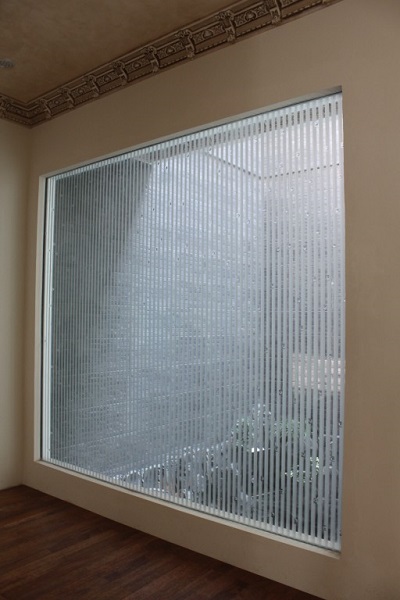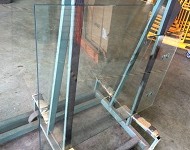 From where I sit, and considering the subject matter that I represent, it is possible to conclude that buildings are all-glass modules: that it is the principal construction material and that it, alone, is responsible for any beneficial environmental properties that a building may have. After all, glass is synonymous with light, warmth and vistas. Right? Often, too, it represents the principal exterior design feature of a building.
From where I sit, and considering the subject matter that I represent, it is possible to conclude that buildings are all-glass modules: that it is the principal construction material and that it, alone, is responsible for any beneficial environmental properties that a building may have. After all, glass is synonymous with light, warmth and vistas. Right? Often, too, it represents the principal exterior design feature of a building.
Glass gets a lot of press, though it wasn’t so long ago that it was identified as the weak link – so to speak – in the insulation of buildings. Indeed, ordinary, plain glass has traditionally had such poor thermal-conductive properties that there was a period in history where a window’s size was purposely minimal comparative to a building’s façade as a whole.
Then in the 1930′s we had the development of the Double Glazed (Insulated Glass) Unit – a tremendous boon to the glazing industry and to the building industry as a whole. It is no accident that it was first developed for use in northern, colder, climates; this basic unit alone immediately created better insulated homes. The concurrent development of laminated glass, tinted glass and special glass coatings with reflective and/or absorbent properties allowed glass, finally, to become an ‘environmentally friendly’ product. The rest is history and glass took centre stage again. So much so that, as I started with, one could be inclined to place perhaps too much importance on it as a structural material. Let’s face it, glass has an inherent weakness – unlike metal and wood, it is rigid, does not bend or flex – and it can break.
Current discourse on ‘Energy Efficient’ buildings frequently tends to over-exemplify the role of glass; other materials and ‘design’ can and do play an integral part. Ironically, it is principally because of glass’ prior bad rap as a building’s energy-loser – heat and cold flowing freely in and out – that it is, in its new guise, given such bold emphasis. Glass has glamour. However, there is an unsung hero out there. There have been great leaps in building design.
Architects, engineers and designers have run with this Energy Efficiency baton for a long time now and have largely been the main drivers behind the search for new, improved product. To my mind they deserve more praise and more credit. Over the last several decades it has often been they who have led the way, with their designs often dismissed as ‘ridiculously futuristic’ or ‘quite impractical’ by builders and the manufacturers of building materials. But their hearts and minds were in the right place – conservation. Conservation of energy and conservation of structural product. A ‘less is more’ philosophy which has tended to make buildings more user-friendly, more inclusive of the outside-inside, and at the same time, less energy consuming.
Concurrent improvements in building materials other than glass – be they metal, ceramic, concrete or even plastics – have also assisted in the whole, relatively rapid, improvements in our structural environment. But it is those behind the scenes: creative minds drawing fanciful structures incorporating lightweight, strong materials – often composites – to whom the credit should go. They are the drivers of progress.

